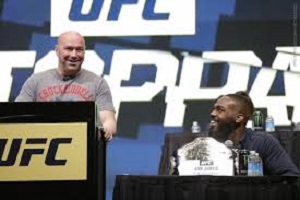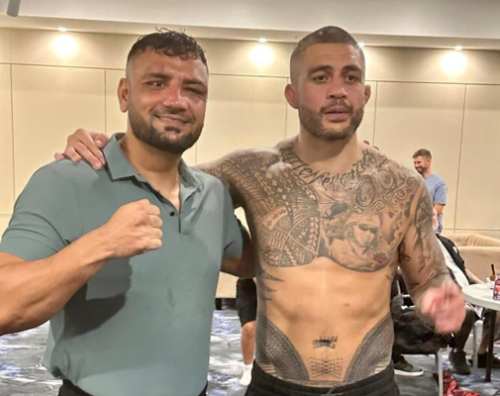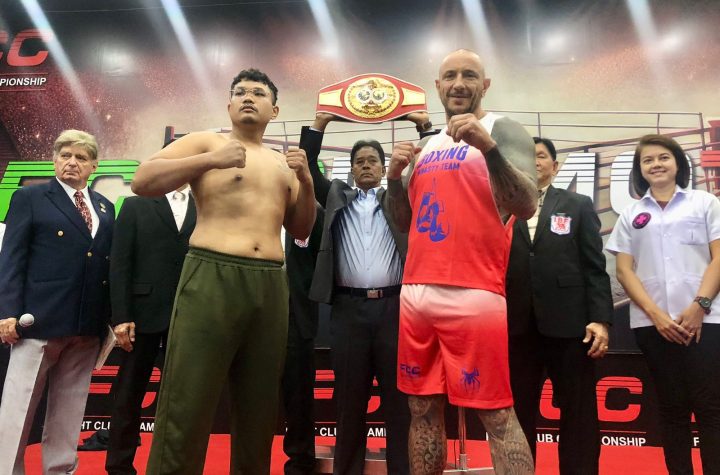
By Mike Chiappetta@MikeChiappetta
MMAfighting.com
The concept of the UFC as a traveling circus was first meant as a term of endearment. Event to event, the show hit the road, with the same faces tiredly but excitedly moving from one place to the next. Sometimes though, the expression takes it its more recognized, mocking tone. This is one of those times.
On Sunday night, with six days to go until UFC 232, the big tent owners suddenly and unexpectedly picked up stakes, moving from Nevada to California after the former state — the one in which nearly anything goes — said it could not license Jon Jones due to a drug testing abnormality. And when we say suddenly, this is what we mean: if you scored tickets for a loved one on Sunday morning as a Christmas present, they were invalid by Sunday night. Most of the fighters competing learned of the change on social media. Jones’ opponent Alexander Gustafsson was allegedly on a helicopter ride around the Grand Canyon when the announcement was made, making him possibly the last person on the entire card to find out.
For years, “card subject to change” has been a boilerplate defense thrusted at fans disappointed to find out the headline fight they’d ponied up to see had been scratched. In most of those incidents, that explanation, while frustrating, was understandable. Some things, such as injuries, are beyond the promotion’s control.
But this is different; this is a whole new one; the UFC straight-up screwed anyone who had committed to traveling to Las Vegas and booking a room in what is one of the busiest and most expensive times of the year, just so they could squeeze one more big pay-per-view fight into their fiscal year.
To make it clear, the UFC had a decision to make after USADA determined a Dec. 9 Jones test resulted in the finding of a prohibited substance: it could put the fans’ interests first by keeping the event in Nevada and headlining with Cris Cyborg vs. Amanda Nunes (or trying to find a late replacement for Jones to face Gustafsson). At least that would have given those who made the trip a choice to attend or to request a refund. Or they could put their own interests first by moving the event to a place where the commission would license Jones. For a company that claims to be fan-first, there is no good rationale for their decision to go west.
UFC president Dana White, in a Yahoo! interview, said the decision was made because both Jones and Gustafsson had trained for the fight and needed to happen because both have put in training camps and that Jones had done nothing wrong. That would all make perfect sense if there was not 24 other fighters(!) on the card that have also gone through the same sacrifices, who are now thrust into turmoil through no fault of their own. (And by the way, many of the UFC’s own will suffer as a result. The logistics that go into relocating an event in six days are dizzying, no doubt leaving a small army of UFC employees working through Christmas.)
But few come out looking good in this mess. For Jones, it’s yet another shot against his legacy. Jones released a statement saying USADA “has confirmed” that he is a “clean athlete,” but that is a long leap from USADA’s actual declaration that the latest results were “consistent with residual amounts from his [July 28, 2017] exposure.” In that incident, arbiter Richard McLaren determinedthat while Jones had “absolutely no intention” to use the prohibited substance, he retained “some degree of fault.” And in a 2016 case in which he tested positive for clomiphene and Letrozol, arbitrators found that “his degree of fault in fact verged on the reckless.” That’s not exactly a clear vindication.
To be fair, this latest case is perhaps the most perplexing of the three, if only because there are no excretion studies that have determined whether turinabol metabolites could still be detected nearly 18 months after usage. It is true that metabolites can become trapped in fatty deposits. In 2013, a University of Georgia football player finally passed a drug test, more than three years after a doctor injected him with a banned substance. During that time, he had over 100 drug tests to prove that the banned substance was declining in level. In Jones’ case, his July 2017 level was between 20 and 80 picograms/millileter (pg/ml). In December 2018, his level was 60 pg/ml. If the level has hardly declined 17 months later, is that a problem? And if it isn’t a problem, how long can we expect such tests to yield a positive result? And how many times can he produce a positive result with no penalty? And what then, is the purpose of testing? And isn’t microdosing a possibility?
There are too many questions with no answers, which is a major issue when USADA’s partnership with the UFC was predicated on transparency and fairness. All of which is to say, USADA has suffered a credibility hit, too. There have been many complaints about their irregular penalties already (Tom Lawlor noted he received a two-year ban for after testing positive for 17 pc/nl of ostarine), as well as previous accusations of favoritism for big-money earners (just last week, they said a “technical glitch” added a phantom test to its public database that later vanished. Over 2,400 tests in 2018 and Lesnar is the one affected. What are the odds, right? Apparently, about the same as Jones submitting a sample with an adverse analytical finding, only to suffer no penalty, meaning, pretty good odds!)
While some parties are walking away as if this was all a big misunderstanding, there are real-life consequences, and huge groups being disregarded while swearing under their breath. Some fans are out tickets, time and money; some fighters have been highly inconvenienced in a moment where they focus should be narrowing. But the principals in this mess? They are only taking a hit to their reputations. Luckily, much like the circus, MMA has never counted dignity as a necessary element for a good show.





More News
Unconscionable Betrayal: Tyson Pedro Camp’s Shameful Swindling of Taimoor Khan
Casimero TKO’s Sanchez in 1st round
Raquinel wins WBC Continental Americas super flyweight title